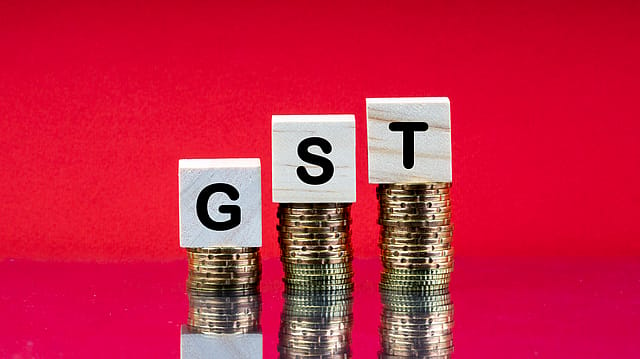GST unlikely to boost tax revenue of states: India Ratings
ADVERTISEMENT

The Goods and Service Tax (GST) is unlikely to boost tax revenues of states as the average state GST growth during financial years FY18 to FY21 has been lower than the growth seen during FY14-FY17 when the taxes subsumed under the GST, according to India Ratings & Research (Ind-Ra).
"The share of state GST (SGST) in their own tax revenue (SOTR) at 55.4% during FY18-FY21 compared to 55.2% during FY14-FY17 indicates that the growth in both SGST and non-SGST components of SOTR has been broadly similar. This means the GST implementation did not result in any incremental benefit to the SOTR. Moreover, SGST growth at an average 6.7% during FY18-FY21 has been lower than the 9.8% growth recorded by the taxes subsumed under GST during FY14-FY17," says Ind-Ra.
The data available so far does not instil confidence with respect to GST achieving or is on course to achieve its two key objectives, namely it boosts the tax revenue and is beneficial for the consuming states, the rating agency says.
"Until the GST implementation, producing/exporting states besides collecting VAT (sales tax) on the sales within the states used to collect central sales tax (CST) up to 2% on the inter-state sales. The states where CST was contributing more than 4.5% to their SOTR during FY12-FY17 were Assam, Chhattisgarh, Gujarat, Haryana, Himachal Pradesh, Jharkhand, Meghalaya, Odisha, Sikkim and Tamil Nadu - a mix of both producing and consuming states. After the GST implementation, the proportion of CST in SOTR declined to 0.95% in FY21 (RE) from 4.16% in FY17," the ratings agency adds.
Since the GST is a destination-based tax, goods and services are taxed at the place where they are consumed and not at the origin or where they are produced. Even the integrated GST (IGST) collected by the centre is shared with the state where the goods or services concerned are sold and not where they are produced. Hence, consuming states were expected to do better after the roll-out of the GST.
January 2026
Netflix, which has been in India for a decade, has successfully struck a balance between high-class premium content and pricing that attracts a range of customers. Find out how the U.S. streaming giant evolved in India, plus an exclusive interview with CEO Ted Sarandos. Also read about the Best Investments for 2026, and how rising growth and easing inflation will come in handy for finance minister Nirmala Sitharaman as she prepares Budget 2026.
The picture, however, is mixed. SGST of some of the consuming states such as Assam, Bihar, Rajasthan, Jharkhand increased during FY18-FY21 compared to FY14-FY17 that of Kerala, Madhya Pradesh, Odisha, Uttarakhand, West Bengal decreased. Similarly, while SGST of some of the producing states namely Gujarat, Haryana, Karnataka, Tamil Nadu declined during FY18-FY21 compared to FY14-FY17, that of Maharashtra, Telangana and Uttar Pradesh increased.
"Since GST implementation meant uniform indirect tax rates across states, SGST/GSDP is showing convergence across states relative to the pre-GST era. SGST/GSDP was in the range of 2.06%-5.33% during FY18-FY21 compared to 1.50%-5.29% during FY14-FY17," the report says.
The GST compensation has become such an important source of revenue for states that without it the GST revenue growth of most states will not reach 14%, it says, adding that it is for this reason that many states are not ready to accept its discontinuation by June 2022 and are demanding an extension.
States have been receiving GST compensation for a shortfall in their revenue since the beginning of the GST implementation.
